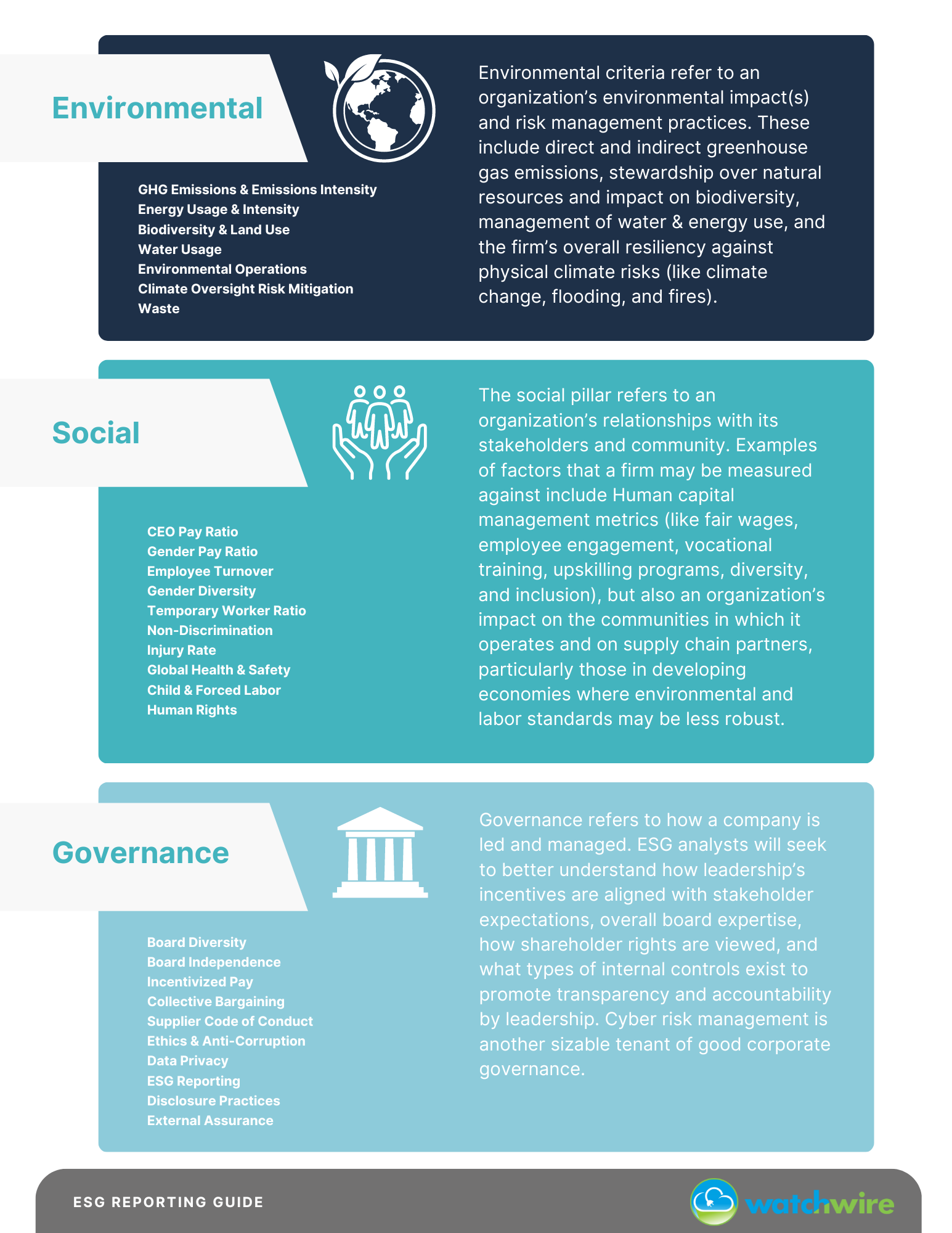Historical Context
In the mid-2000s, the term ESG was first coined. In its infancy, the proponents of ESG were far more concerned with governance factors like whether the share structure was rational or if the C-suite was taking an unfair cut of profits. Today, the environmental domain stands out to many as the most important and simultaneously the most controversial category of ESG. The creation of ESG was simply an effort to shift the narrative on the traditional social responsibility of firms in light of alarming data on social metrics and environmental decline. It evolved from other historical movements focused on health, safety, and delivering on corporate philanthropy; namely corporate social responsibility (CSR), socially responsible investing (SRI), and impact investing. By the late 2010s, ESG was cemented as a much more credible, largely accepted, and well-used business tool for reporting and investing.
Traditionally, the social responsibility of business has been about profit and profit alone. However, societal values, availability of data, and global situational context has changed in the 21st century. Companies have had increasingly large impacts on our politics, and now are important political actors, whether we like it or not. This fact combined with the proven negative externalities that firms impose on the environment and social factors like climate change or inequality led us to the question of whether these matters do in fact matter to business (or if the fact that they matter to society should make them intrinsically matter to business). ESG was a tactic to spearhead corporate transparency about impacts by reporting on environmental and social issues through the lens of risk. The initial hope was that universal disclosure and the creation of a body of shared comparable data on ESG metrics across businesses and industries might elicit a by-product of greater corporate accountability, especially for firms that do not demonstrate progress on ESG issues. Disclosure of these metrics can inadvertently cause firms to pursue competitive advantages associated with ESG or put in the effort to establish a good public image when cross-compared with other businesses on ESG factors.
Sustainability vs. ESG
Many practitioners view sustainability and ESG as synonymous. However, there is a nuanced differentiation between the two popular buzzwords that many corporations and investors should be wary of. Sustainability deals with both the concept of sustainable value creation at the corporation level (efficiency), and sustainable development at the system level that is concerned with making the world a better place, preserving resources, and generating value for future generations (generating positive externalities and impact). ESG should be understood by its simplest definition: “material risk factors that matter for enterprise value creation”. This is in direct contrast to the idea of sustainability being primarily about the general effort to improve and preserve the common good with impact rather than the long-term risk management strategies of any one corporation, which is what ESG primarily drills into.
ESG vs. Impact
ESG is often conflated with the idea of the impact, but the two are actually very different, yet connected concepts. ESG is simply the consideration of material environmental, social, and governance risk factors that matter to enterprise value creation and how you go about managing these risks (single materiality). Impact is about positive and negative externalities created by a company’s products and services and a question of where you invest outside the firm-wide value chain (double materiality). The link between ESG reporting and the generation of impact is due to the fact that well-rounded risk management and positive returns on investment are correlated with reducing environmental pollution, mitigating climate change, and valuing fair labor and workers’ rights. Firms are often naturally incentivized to generate impact after uncovering their ESG risks while reporting. A good way to think about the difference is the possibility that a firm can score well on ESG values within its operations, while simultaneously generating negative impacts on society and the environment with its services. Good management of ESG is proven to reduce overall negative externalities but does not necessarily create or require the generation of positive externalities.
Ultimately, the bottom line conversation to be had within each firm tackling ESG is not exactly what ESG means, but whether or not an environmental or social issue is or is not a material risk factor. It’s that simple.
WatchWire provides full-service carbon accounting, tracking Scope 1, 2, and 3 emissions, renewable energy credits (RECs), global warming potential, and more. To discover more about WatchWire and its capabilities, you can visit our website, blog, or resource library, request a demo, or follow us on LinkedIn, Instagram, or Twitter to keep up-to-date on the latest energy and sustainability insights, news, and resources.
 Top Sustainability Trends to Watch in 2025
Top Sustainability Trends to Watch in 2025

 Log In
Log In









